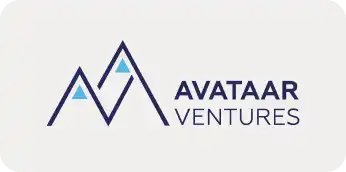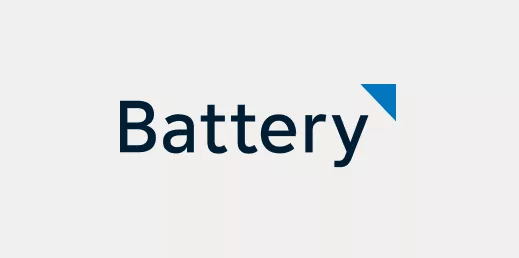Welcome to another episode of Founder’s Deep Dive! Join our guest, Sachin Bhatia, and our host, Suresh Sambandam, as they delve into several topics, including the formula for happiness, expanding into a global market, and all the challenges and wins that come along the way. It’s a very intellectual conversation where they talk about very abstract and high-level concepts using anecdotes from their own lives. Enjoy the episode!
The Formula for Success
Suresh starts off with a poignant rant about how a formula for success might not exist, but a formula for happiness can.
Unlike success, which often depends on external validation and keeps evolving, happiness is internal. You don’t need anyone else’s approval to define your happiness goals and boundaries. The key is to find joy in what you do, and you’ll find you’ll be able to brave any challenges that you may come across along the road.
While the pursuit of happiness has kept Suresh going for 20 professional years, Sachin’s quest towards success has been trying to answer one important question: Why isn’t India producing successful product-based companies?
He talks about how the international top 5 companies back in 2003 were all product-based (HP, Oracle, Microsoft, Apple, IBM), while the top 5 in India were all service-based (Satyam, Wipro, Infosys, TCS, HCL). He compares this dichotomy with an analogy of building a house—if being the architect who designs the house is so much more exciting and desirable, why are all Indian companies trying to be the contractors who get the designs built? That’s how Sachin decided to create Ameyo (called Drishti at the time) in 2003. The aim was to be the architects instead of contractors.
As for success, Sachin believes that the formula is to just survive through all the challenges and strife that the market will throw at you.
The story of Ameyo (Drishti) struck a chord in Suresh, as his journey was very similar. Taking inspiration from the Tamil origins of the Sanskrit word “orange” and the popularity of oranges in California, Suresh and team created OrangeScape in 2003, which would eventually become Kissflow. They wanted to be architects, not just contractors. This sentiment extended to the whole country. The early 2000s were an era of collective aspiration for a new India—a product-driven, entrepreneurial India.
Drishti’s Rise
Recognizing the potential of SaaS in the U.S., Drishti secured capital in 2000, becoming profitable. They raised about $5 million and formed a dedicated group called Texo, even buying a domain called texo.cc.
Then they realized the significance of inside sales and sales development; and launched a product called InsideSalesBox. Despite its success, the high customer acquisition costs in the U.S. revealed a critical flaw. While securing multi-million deals globally, their U.S. expansion struggled with a $1 million ARR (Annual Recurring Revenue). They realized maybe the U.S. wasn’t the right target for SaaS offerings.
The turning point was the disturbance in their mothership business. A string of bad leadership hires later, they realized that they would run out of cash in a mere six months. They immediately put all hands on deck and raised the bank balance from minus two crores all the way up to 55 crores in three years by focusing solely on large enterprises.
While SMB SaaS opportunities are abundant, there is no unit economics to support growth easily. The key is disrupting with a hybrid model—providing software free while integrating with FinTech.
Going Global
Reflecting on this journey, Sachin emphasizes the knack of understanding the nuances of emerging markets. It is not a shortcut or a cheat code, because it demands sustained effort in each country you’re planning to expand to. Pricing variations exist, For example, the Middle East offers maximum value, followed by Southeast Asia and India. Africa presents high-value opportunities due to underserved markets. You need to have an individual market presence and examine local market trends.
In terms of ACV (Annual Contract Value), India exhibits a wide range, from 30K to multi-million deals. UAE, though it may initially be challenging, stands as one of the fastest-growing segments, highlighting the evolving perceptions in Dubai about Indian corporations.
For aspiring global entrepreneurs, Sachin recommends establishing threads in both Dubai and Saudi Arabia, since their \startup ecosystems are welcoming. Despite past biases against Indian companies, Dubai is becoming an attractive hub, and having a presence in both markets can prove beneficial. Sachin plans to open a Saudi entity next year to strengthen their local presence.
The key is persistence and adapting strategies to local nuances for long-term success.
Indian Companies in Dubai – A Case Study
The prevailing salary dynamics in Dubai reveal a paradox—despite seasoned local professionals with a decade of experience in the market receiving relatively low salaries, Indian startups are raking in exceptionally high salaries, particularly in sales and delivery roles. This disparity is sometimes as big as two to three times the salaries in local businesses. This is possibly because the startups from abroad offer expat salaries, which are usually considerably higher than the local businesses and employees are used to.
An International Team for an International Company
Sachin’s team in Dubai is multicultural, with individuals of European, African, and Arabic backgrounds—just like the population of Dubai. He argues that a team of mixed demographics might help a lot with initiating conversations with other businesses and organizations, but it’s not going to be pivotal for success in the long run—that still comes down to your skill and business acumen.
Sachin’s experience with Exotel involved a considerable amount of hard work, relying on outbound motions to set up appointments remotely and qualify for opportunities, despite having a multicultural team.
Trust Building
“Product is necessary, but not sufficient.”
You may have a supercharged amazing product in your holster, and it might just do the trick, but without building trust with your customers (especially if they’re enterprises, and especially in your initial stages) it’s difficult to see a lot of scaling and growth. The sales, pre-sales, and delivery teams must work on building trust and relationships as part of their KRAs for your company to be the go-to option for customers once the need arises. It requires at least 2 years of laying a solid foundation before you move to actual high-stakes business deals because by then you would have developed and established trust enough for them to be comfortable with dealing with you.
Pipeline Generation
Sachin identifies three primary channels for pipeline generation—inbound marketing, SDR outbound motion, and channel partners. For consumer tech in India, inbound marketing dominates because of brand recognition, while large enterprises lean heavily on SDR outbound motions. Internationally, a hybrid approach, with a strong emphasis on SDR outbound, has proven effective.
The SDR function is best kept independent of sales, preferably under the marketing umbrella. Clearly defined handoff criteria, such as an ISQL (Inbound Sales Qualified Lead), streamline the process. Customer success, sales, SDR, and marketing teams collectively focusing on a limited set of key accounts make your engagement levels a lot deeper.
Bottom line: enterprise success hinges on strategic focus—reducing the number of enterprise accounts, intensifying efforts within a select group, and prioritizing relationships, especially in emerging markets where trust remains a critical currency.
The sales team should have a focused approach, dedicating ample time to individual accounts rather than reacting to situations that keep changing. Success, particularly in the outbound motion of Sales Development Representatives (SDR), relies heavily on careful planning and execution.
To delve deeper, let’s consider the intricacies of SDR success, which isn’t merely about reaching out to a set number of accounts periodically. Exotel, for example, employs a sophisticated system. In the consumer tech segment, the team tracks Series A funding rounds, triggering outreach to potential accounts. Additionally, monitoring key personnel changes within target companies serves as another opportunity for engagement.
Building Clients and Holding Clients
It’s very important to balance out engagement with existing clients and the creation of new opportunities. Exotel has shifted from the traditional hunting-farming model to a collaborative account director and customer success model. The focus is on maximizing revenue growth within existing accounts through organic expansion, new business, and strategic retention efforts. Even when the buying cycle is unpredictable and spans from months to years, it’s important to stay on top of current clients.
Marketing also plays a pivotal role in an inbound context. Using tools like Salesforce, and integrating various functions and databases to streamline processes will definitely make it easier to market yourself. The marketing team should be spread across the entire pipeline, influencing opportunities at as many stages as possible.
Or emerging markets, founders should thoroughly research the state of the market before entering a new country. Prioritize markets that work better for you, avoid simultaneous expansion into too many territories, and focus on a select few with a well-defined Ideal Customer Profile (ICP). The key to success here is experimentation, adaptability, and a long-term perspective.
Final Words of Wisdom
- Don’t just react.
Find out what you want first, and make sure the opportunities that you have access to are in alignment with your goals and vision for your company.
- One at a time
Don’t try to simultaneously expand into multiple markets, as it will just stretch you thin. Focus on one or two markets, build them well enough to sustain properly, and then move to the next.
- Don’t spray and pray
Focus on your SDR and do as much research as possible before investing time and money. Select your accounts. Validate whether the segment you’re looking at works for your company.
- Don’t listen to any advice
Just because it worked for someone else doesn’t mean it should or will work for you. Make moves that make sense for the situation that your company is in. Sachin’s mantra – “Figure out, validate, and experiment.”
- Don’t die
Just survive somehow. It takes at least two years to start seeing any glimpses of success. Don’t pull out after 12 to 14 months because you’re not seeing results. Survive long enough and the results will come.



























